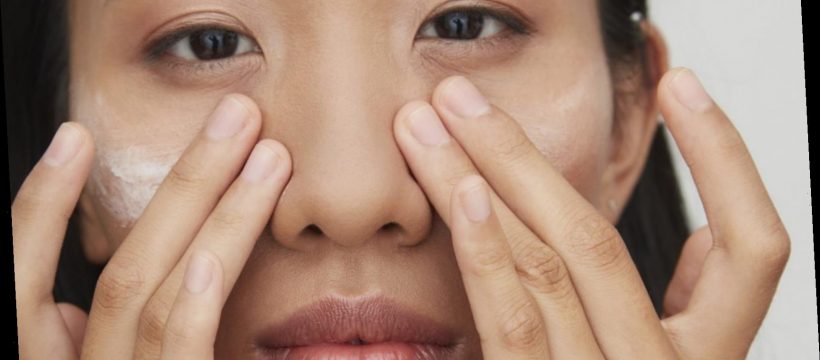Alcohol is often given a bad rap for being too drying on our skin but should we cut it out completely? We asked the experts if Dry January should extend to our skincare routines too…
While we’d like to think we’re pretty clued up on which ingredients are good for your skin – vitamin C, hyaluronic acid, ceramides, we love you guys – it can be tricky recognising those ingredients that might not be so favourable.
Alcohol has been used in skincare formulas as a preservative forever. It stops our moisturisers from becoming mouldy and our retinol going rancid. But it also gets a bit of a bad rap for being overly drying on the skin – so how much is too much?
Is alcohol in skincare bad for your skin and should we actually be extending Dry January to our skincare routines too? We called upon the experts to help us debunk the skincare scaries from the cold hard facts.
Here’s everything you need to know about alcohol in skincare…
Is alcohol in skincare bad for your skin?
“Alcohol in skincare is more complex than you may have first thought. Much like Jekyll and Hyde, it has both a good and bad side,” reveals Daniel Isaacs, director of research at Medik8.
Alcohol serves as a preservative and acts as a solvent, and we often need both of these in products to make them usable. But there are two different types of alcohol which have very different effects on the skin.
Ethanol, otherwise known as alcohol denat (short for denatured), is often seen as the villain of the skincare world. It can be drying, irritating and at high percentages is bad for the skin.
“Alcohol denat is used in formulations to leave its texture almost weightless,” explains Isaacs. “It can also be used to help other ingredients absorb into the skin by breaking down the skin’s protective barrier. But formulations with high amounts of alcohol denat can damage the skin barrier, allowing pathogens in and water to escape.”
Sometimes the use of small amounts of alcohol denat is unavoidable to dissolve certain active ingredients, so it all depends on recognising how much alcohol is too much.
“If the alcohol content of a product is 5% or less, this alcohol actually completely evaporates as we apply it to the skin, so it cannot dehydrate the skin,” reveals Jennifer Rock, dermal facialist and founder of Skingredients.
Then there’s the flip side. Fatty alcohols such as cetyl, stearyl and cetearyl alcohol can be non-irritating and actually quite nourishing for the skin.
“Fatty alcohols are emollients that help to moisturise and nourish the skin, leaving it supple and soft,” says Issacs. “These ingredients are non-irritating and ideal for dry skin. So yes, fatty alcohols are safe and effective additions to skincare.”
Should you avoid alcohol in skincare?
As there are so many different kinds of alcohols in skincare – and at different percentages – it seems pretty rash to cut them all out.
“It’s clear that the alcohol in your products serves a purpose,” says Rock. “However the amount of alcohol in things like cleansing wipes does not serve a good enough purpose so I’d say bin them and opt for a skin-friendly pre-cleanse tool instead.”
If you’re unsure about the amount of alcohol in your skincare products, it’s time to make friends with your ingredients list. Ingredients are listed by the percentage within the product – the higher the percentage, the higher up on the ingredients list you’ll find it. Therefore, if alcohol is included near the beginning of the list, it’s likely there is a high percentage within the product.
It’s also important to listen to your skin. If your skin feels dry and tight after using a product, it might not be right for your skin.
Image credit: Getty
Source: Read Full Article
